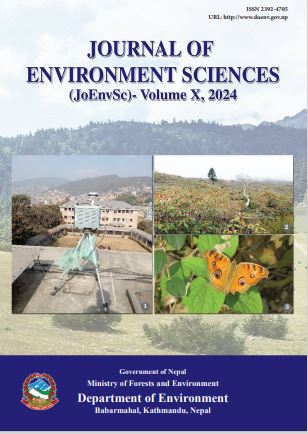Efficiency of Ceramic Candle Filters towards Purification of Drinking Water
DOI:
https://doi.org/10.3126/jes.v10i1.66976Keywords:
Colloidal silver (CS), NDWQS, Point-of-use water treatment, Water borne diseasesAbstract
This study addresses a critical research gap in Nepal, focusing on the effectiveness of ceramic candle filters for purifying drinking water. The research assesses their performance in removing physico-chemical and microbiological parameters, along with flow rates. A market survey in Kathmandu and Surkhet informed the selection of five brands. A cross-sectional, block design experiment over two cycles measured water quality and flow rates. Physico-chemical parameters met NDWQS standards. Microbial tests revealed a significant reduction in E. coli and total coliform bacteria, albeit not within NDWQS limits. Flow rates showed no significant variations. Comparative analysis favored silver-coated (CS) filters, with Apollo among non-CS filters exhibiting the highest microbiological efficiency, followed by Hotsun, Surya Vinayak, Surya Nepal, and Milton. This research aims to contribute valuable insights for promoting efficient point-of-use water treatment practices in Nepal.




